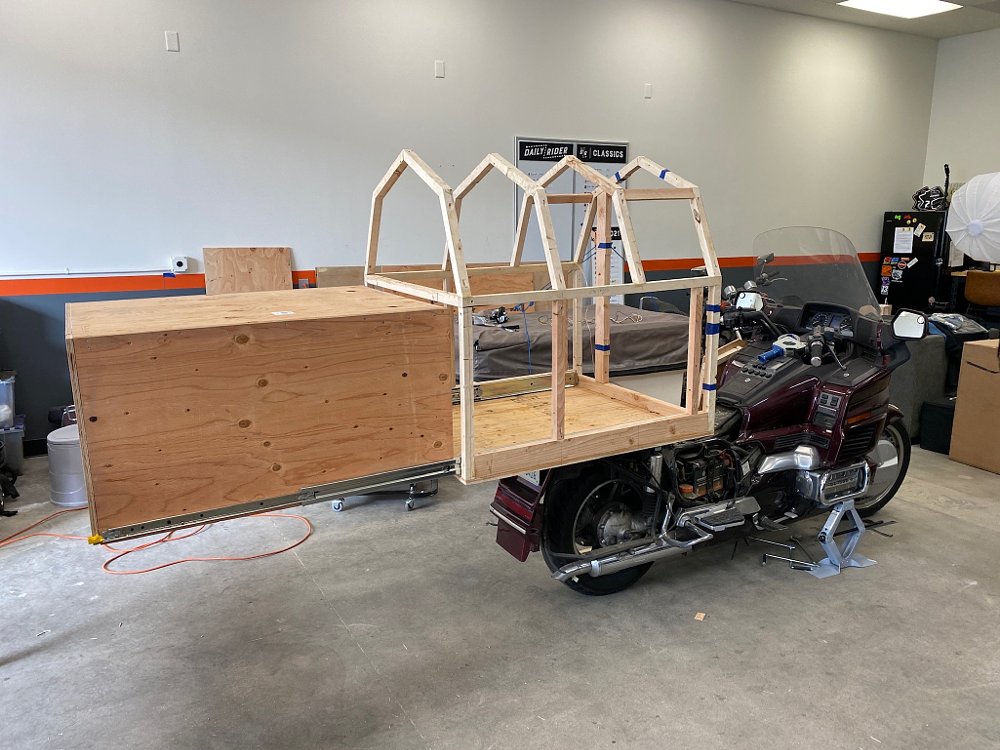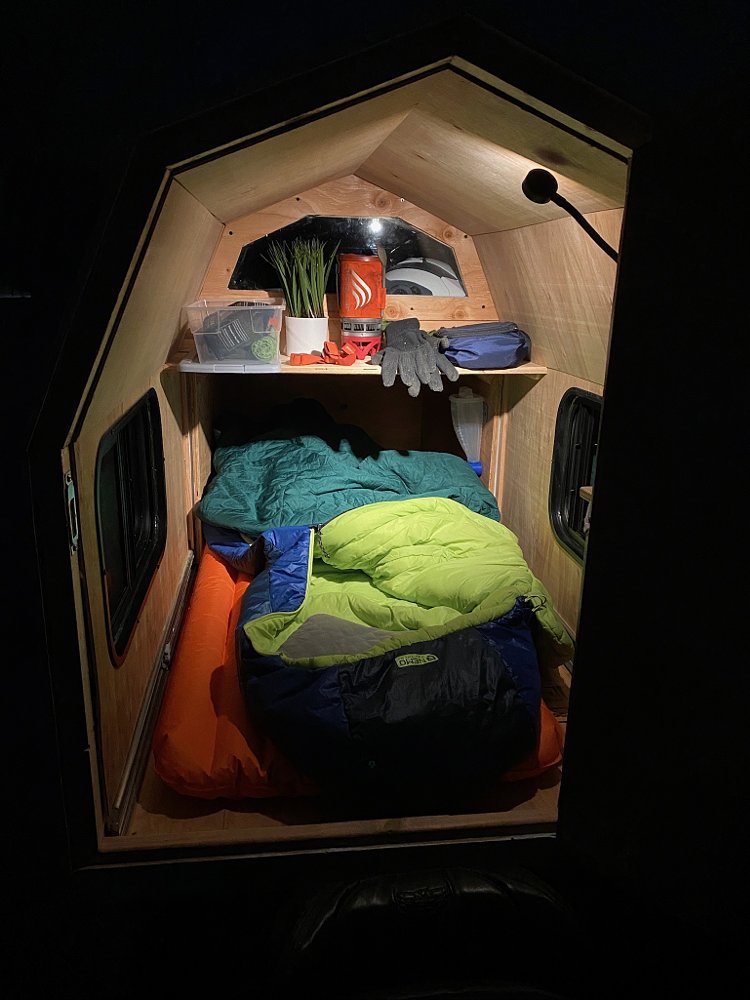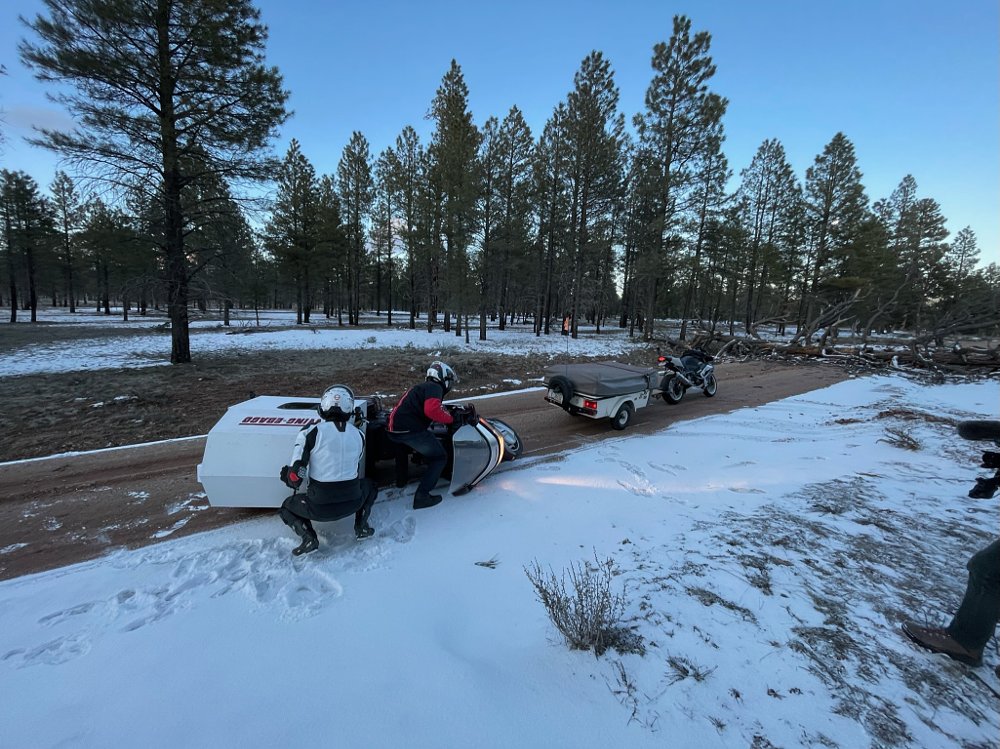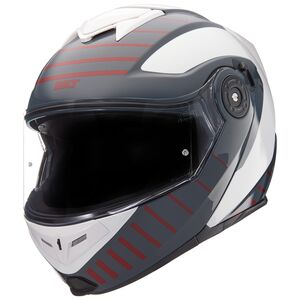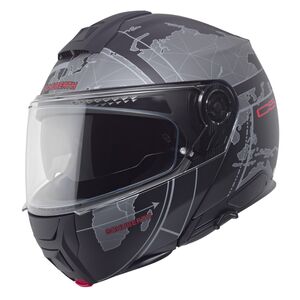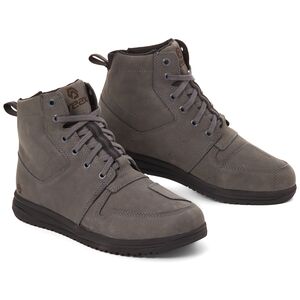Camping stinks. Objectively, I mean. Maybe you’re the type of person who likes sleeping on the ground and wondering if you’ll get wet when it rains. Bless your masochistic little heart.
Motorcycle camping can be a bummer for the same reasons, and at least in part because it doesn’t have to be so bad. You’re on a motor vehicle, for crying out loud, why sleep in a tent like a lowly backpacker? For our most recent Common Tread eXPerience, we here at RevZilla attempted to fix the problem of sleeping uncomfortably on a motorcycle camping trip, and the solution seemed incredibly clear. Bigger beds and sturdier roofs. We allotted ourselves about $2,500 each of RevZilla’s money and got to work.
The solution I landed on was a blend of two things that have worked well in the past. One, a camping trailer being pulled behind a motorcycle — this isn’t uncommon in the two-wheel world, because these trailers are comfy and fairly easy to find. The second piece was none other than Dave the Gixxer, our company-owned 2006 GSX-R1000 that we bought in 2020 to take on a Ducati Panigale V4. The idea being, if one could combine the convenience and luxury of towing a comfy camper behind one of the world’s most famous and capable sport bikes, that’d be a keen combo.
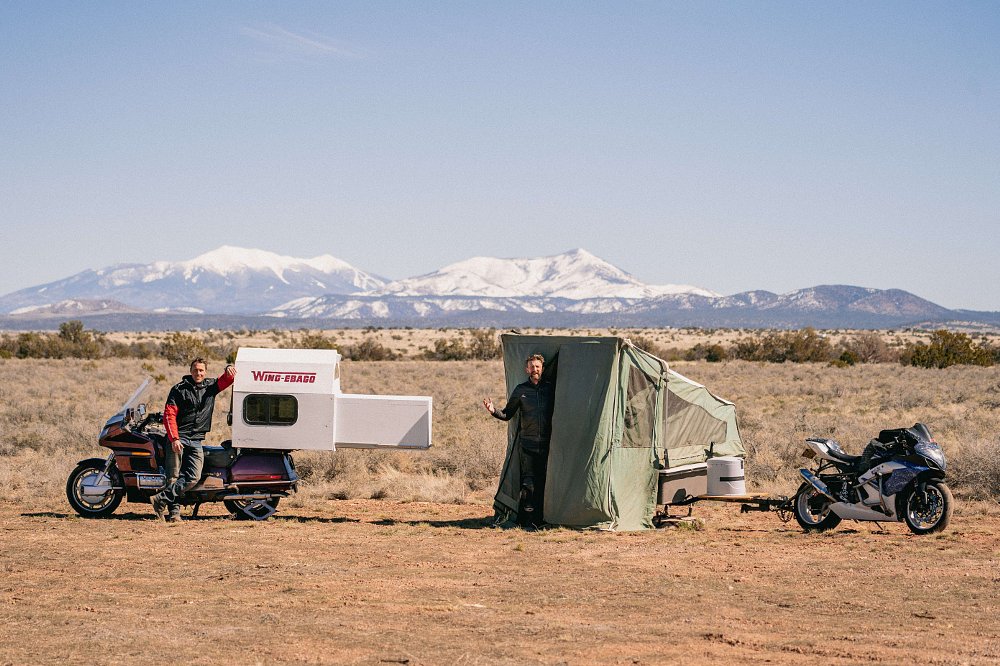
My dear friend and colleague Ari, who will never do 20 pushups when he could do 100, applied his usual work ethic to this motorcycle motorhome project. He chose the purist’s take on a two-wheeled RV, placing his accommodations on top of an existing machine. Sort of like the MotoHome™, except more flexible and a little less… wheelbase-y. The amount of success we had in the video is up to you to judge. How we departed in the first place was another adventure.
The Hypersport Camping Pavilion
Purchasing a motorbike and a place to sleep for $2,500 felt nearly impossible — you’d have to be some kind of whiz kid to do that, as you’ll see — and so I did what any normal millennial would do. I cheated. Dave the Gixxer has been sitting proudly in our lobby for the past couple of years, every now and then getting the dust blown off his beautiful, splatter-painted skin to test seven-year old tires or make a run to the airport. What better machine to tow a trailer, I thought.
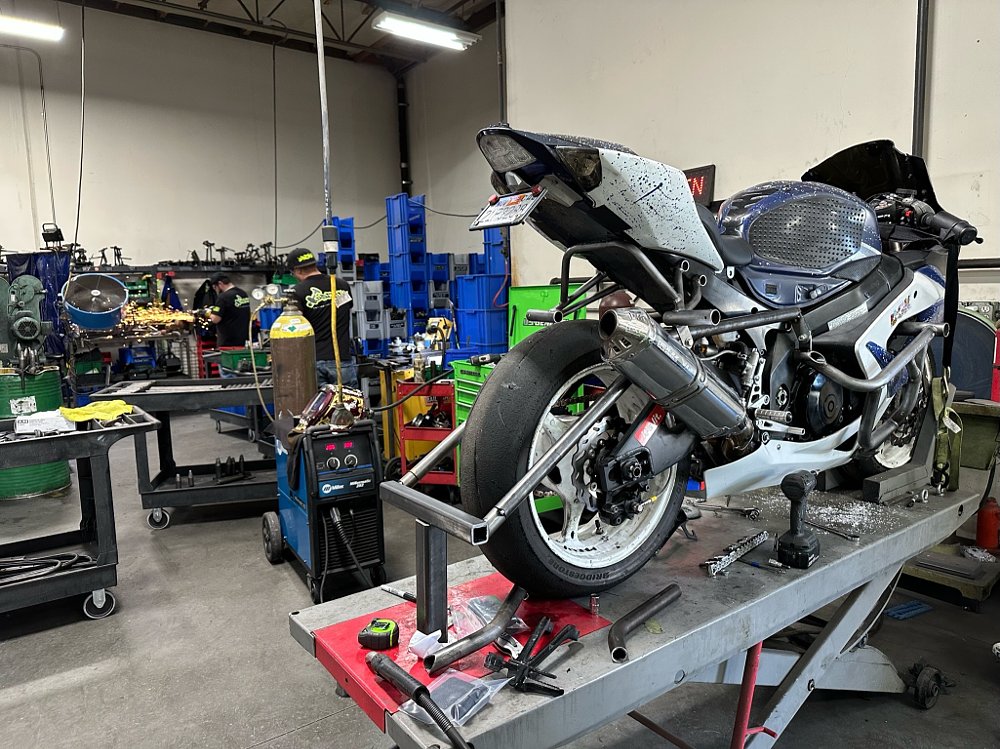
With the help of director/producer Spenser, and his worrying obsession with Craigslist search alerts, we snagged a 1999 Kwik Kamp trailer for $1,500, about 400 miles away in Arizona. It was graciously delivered by Spenser’s dad, who is similarly afflicted by chasing the high of a good deal. Evidently it’s genetic. The Kwik Kamp offers a full-size bed, standing room, and access to the storage inside the tub from within the musty, canvas cavern.
With the remaining thousand bucks, I set out to turn Dave into a towin’ machine, which proved to be tricky. If you’re looking to tow a trailer with a factory bagger from Harley-Davidson, Honda, or other titans of touring, there are some neat plug-n-play options from companies like Kuryakyn or Khrome Werks. For the greatest GSX-R ever built? Not so much.
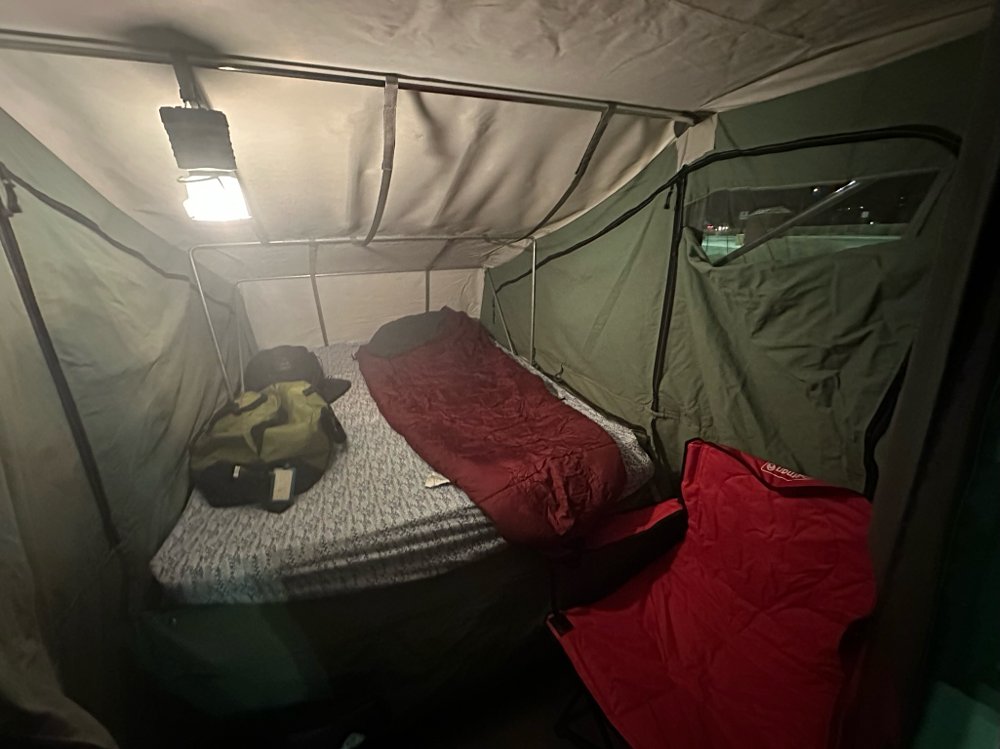
After studying some photos of other custom builds, Ari and I figured that if we got a sturdy, steel crash cage for Dave the Gixxer then we (mostly Ari) might be able to weld some tubing and braces that would cantilever a tow hitch just behind the GSX-R’s rear wheel. I got in touch with Impaktech USA, a local SoCal company, and talked them through what we wanted to do with its cages.
Impaktech cofounder Juan seemed confident that it would work, and equally certain that we would screw it up if we tried it ourselves. Maybe he hadn’t seen our house-built Dumb and Dumber bike’s excursion in the Rockies. Or maybe he had. With about a week until we were due to depart on our trip, Juan convinced me to let his welder stick the pieces together. The result: two neatly curved pieces of steel tube, braced against the passenger-footpeg mounts and cradling a 1⅞-inch trailer ball.
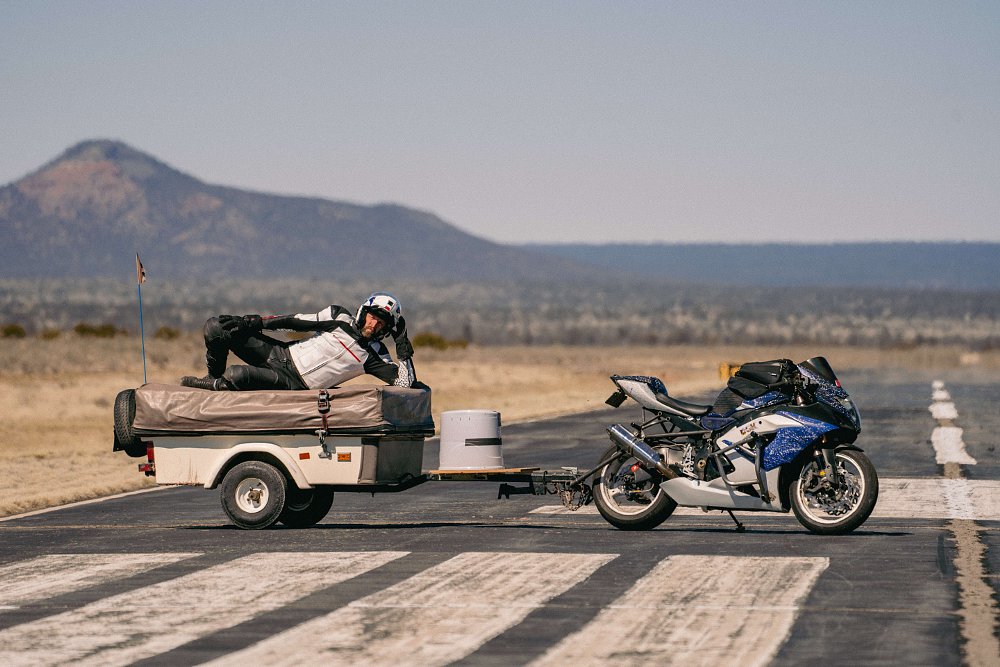
Odds ‘n' ends included three-inch bar risers for a more comfortable riding position on a long trip, plus a magnetic tank bag and an XXL heated vest left over from building the world’s fastest pizza-delivery bikes. I ran the vest’s controller into the transparent pouch on top of the tank bag and voilà, sport-touring Gixxer. And only a little bit over budget, including Impaktech’s labor.
The Wing-ebago
Unlike my fairly conventional trailer setup, Ari chose to try to change the world of motorcycle camping forever. And he just about succeeded. Discussions on how he might pull off putting a tiny house on the back of a used motorcycle took on many shapes. Conversations ranged from how much weight would break a 2009 Kawasaki Versys 650 subframe, to how large a building could be placed on a motorbike before law enforcement paid too much attention.
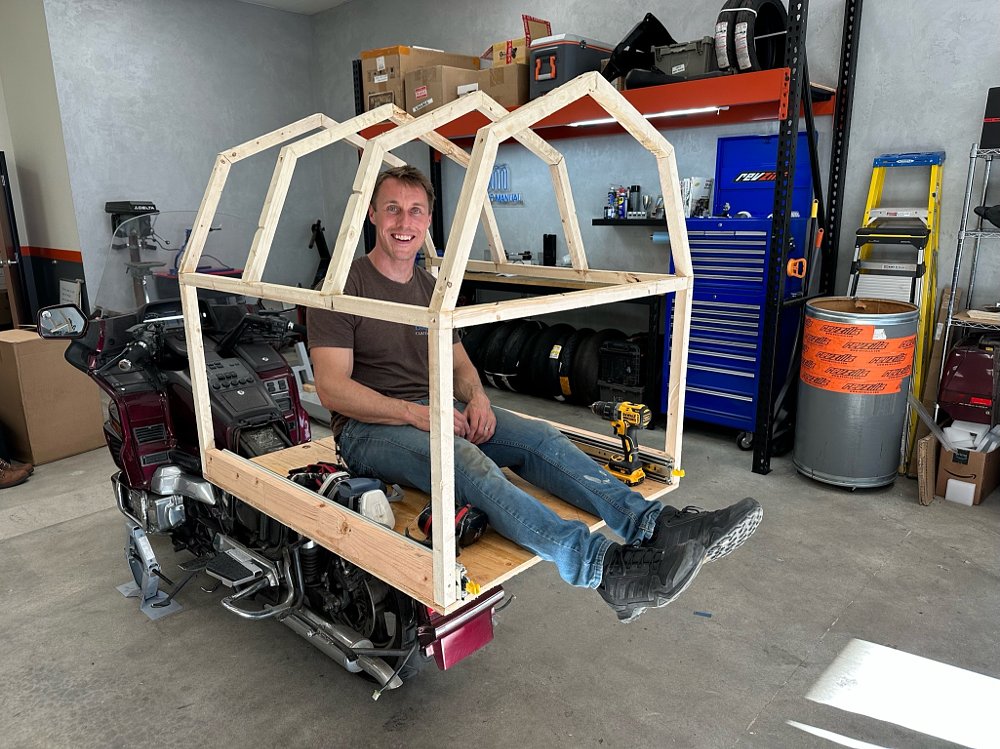
After a little more Craigslisting, someone said something like “there’ve gotta be some solid mounting points on an old Gold Wing” and with that, motorcycle motorhome destiny was on its way to being manifested. Ari and I rode to South Central Los Angeles and he bought this fine example of a 1989 Honda Gold Wing. The seller, coincidentally also named Juan, and all other previous owners had evidently treated this ‘Wing to a pretty courteous 114,000 miles — everything seemed to be in good shape, including the original two ignition keys, tool kit, and owner’s manual. A peach, for $2,000.
Cognizant of the budget, Ari started by scrounging some materials from behind a powersports dealership in the neighborhood. That’s actually not entirely true. He often scours alleys and industrial lots in his free time, so keeping costs down on this project was a happy accident. The 1x1 softwood framing for a crate to hold a new Jet Ski and a couple of pieces of half-inch plywood would do nicely as a start to his new house on wheels.
He chose a gambrel (or barn) roof, which uses a multi-pitch design that would buy him some shoulder and headroom inside the ‘Bago while reducing the overall height that he would have needed with a single-pitch roof. It required a gaggle of 22.5-degree cuts to get the framing angles right and more roof panels to set and seal. When the first box was complete, sure enough, more than enough space inside for Ari’s five-foot, 10-inch self to sit upright.
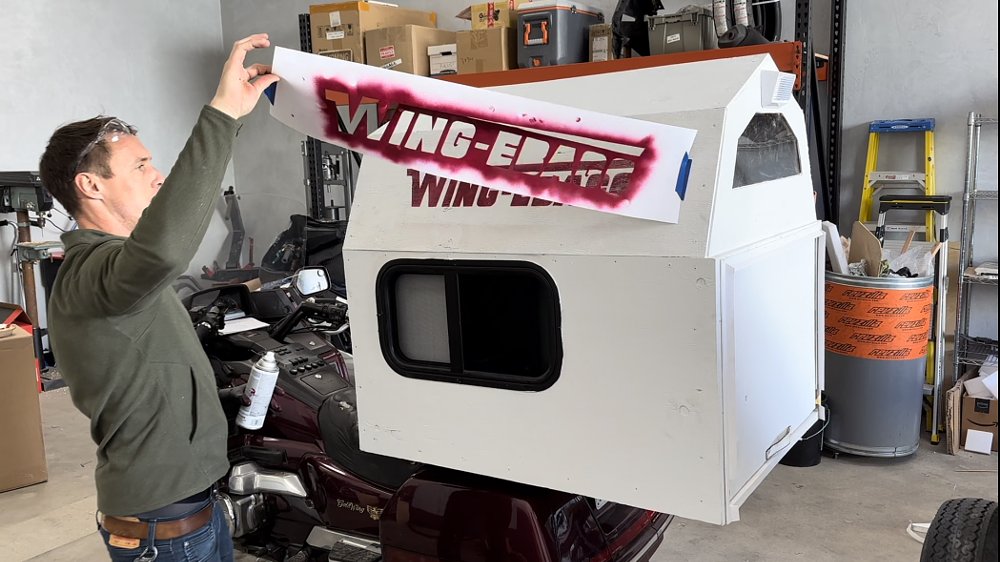
Having enough length inside for sleeping was another story. Ari will be the first to tell you that he often sleeps with his arms over his head, so he needed more like six and a half feet of total length to rest comfortably — and if you’re already putting a tiny barn on the back of your Gold Wing, comfort might as well be a priority. At some point I suggested a “box-in-box” design whereby a slightly smaller area could slide out from within the main structure. What I did not suggest specifically was, y’know, how to build it.
Ari’s solution was to buy 42-inch drawer slides rated for 500 pounds and affix them to the sides of a box just small enough to fit into the mini barn. The idea being that, once parked, the Wing-ebago’s square footage could practically double in size. The mockup worked, so he screwed a pull-strap to the back and sealed the small gaps around the edges with vinyl weather stripping.
After the sliding and screened windows were framed in, Ari filled the wall cavities with fiberglass insulation (found in an alley, obviously), finished the interior wall with eighth-inch sheathing, and installed a couple of storage shelves inside. Just above where the footwell slid out, where there would have been a vacant slab of plywood, Ari recycled the piece of plexiglass (used to show the inside of a gas tank in this episode of The Shop Manual) to create a roof-level window to let in some natural light.
This was no scuzzy hovel, mind you, it was also prepared for today’s modern traveler. With an old lamp cord, Ari ran power from the Gold Wing’s enormous battery to the barn, then wired in a reading light, USB ports with an integrated volt meter, and an outdoor light cast a cool glow on whatever campsite was graced with the Wing-ebago’s presence. For extra stability when on the center stand, scissor jacks were attached to the mufflers, and could be deployed once the rig was parked for the night.
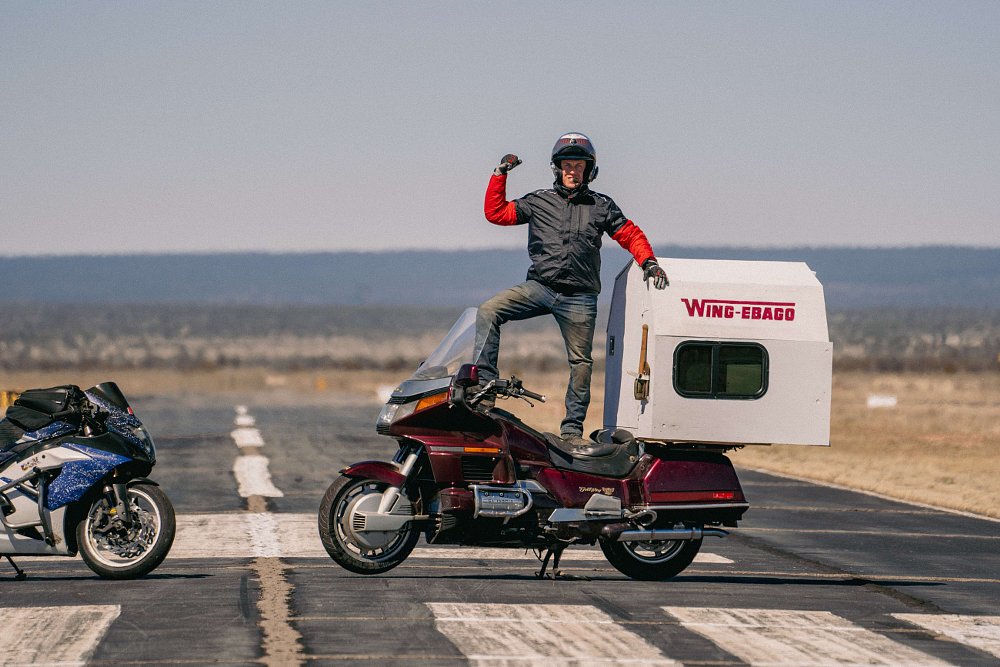
In the end, Ari’s tiny home added about 250 pounds to the G-Wing’s standard, 800-something pound curb weight. This new, 1,100-pound vehicle was dubbed the Wing-ebago, and it came in just about on budget, Ari having spent around $500 along the way. Smashing a bottle of champagne on the hull might’ve been the right thing to do, but the selection of champers at Home Depot is poor. Plus, we had other things to focus on, namely a 600-mile road trip across the American southwest.
Canyons seen and lessons gleaned
There were all manner of bumps in the road on our way from RevZilla West in Los Angeles to the Grand Canyon. Ari was quick to point out that the Wing-ebago was a proof of concept only — that’s a diplomatic way of saying that he knew he’d find some flaws.
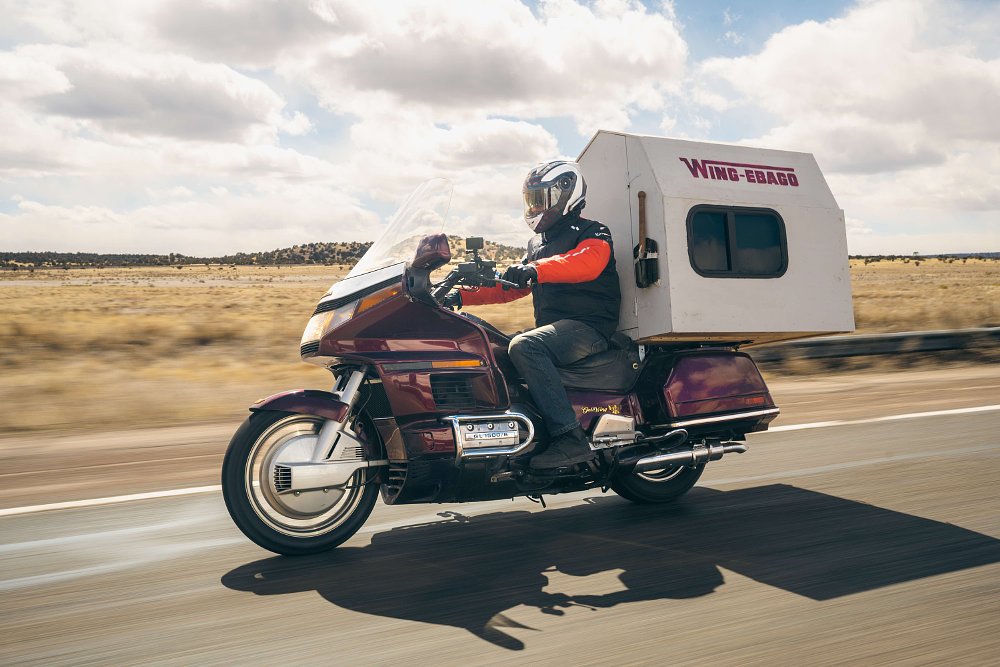
For example, the Wing-ebago was a nightmare in crosswinds. It’s hard to say that was a surprise. Stability while sleeping in it also came into question, though as long as it’s parked on asphalt or concrete it seemed to work just fine. Jacks that swung down from the port and starboard edges of the sleeping quarters would likely be the ticket. Like Ari said, proof of concept.
Dave the Trailer Queen had a few quirks, too. Every other time I’ve towed a trailer I’ve done so with a heavy bike (like a Gold Wing) and pulled a load of a few hundred pounds. That means the bike and rider weighed three times what the trailer did. With the Hypersport Camping Pavilion, bike and trailer weigh just about the same, and that led to the tail occasionally wagging the dog.
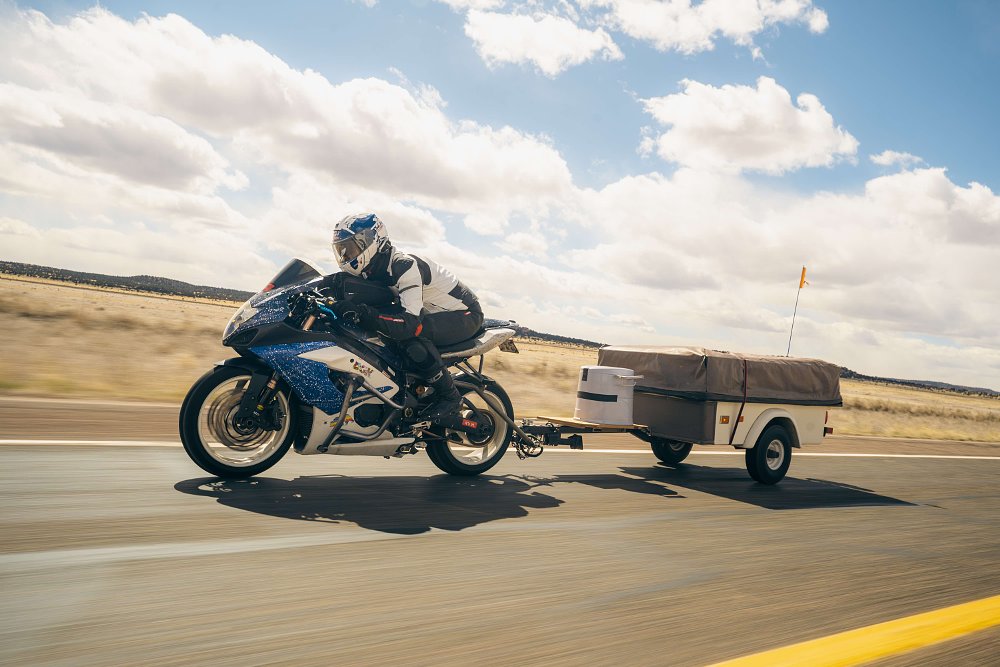
To put a finer point on it, Dave was hauling an extra 450 to 500 pounds, but almost none of it was pushing the hypersport tires into the pavement. I thought the rig might be prone to wheelie, but actually the rear tire spun under acceleration before the front wheel came up. That part was kind of fun, actually.
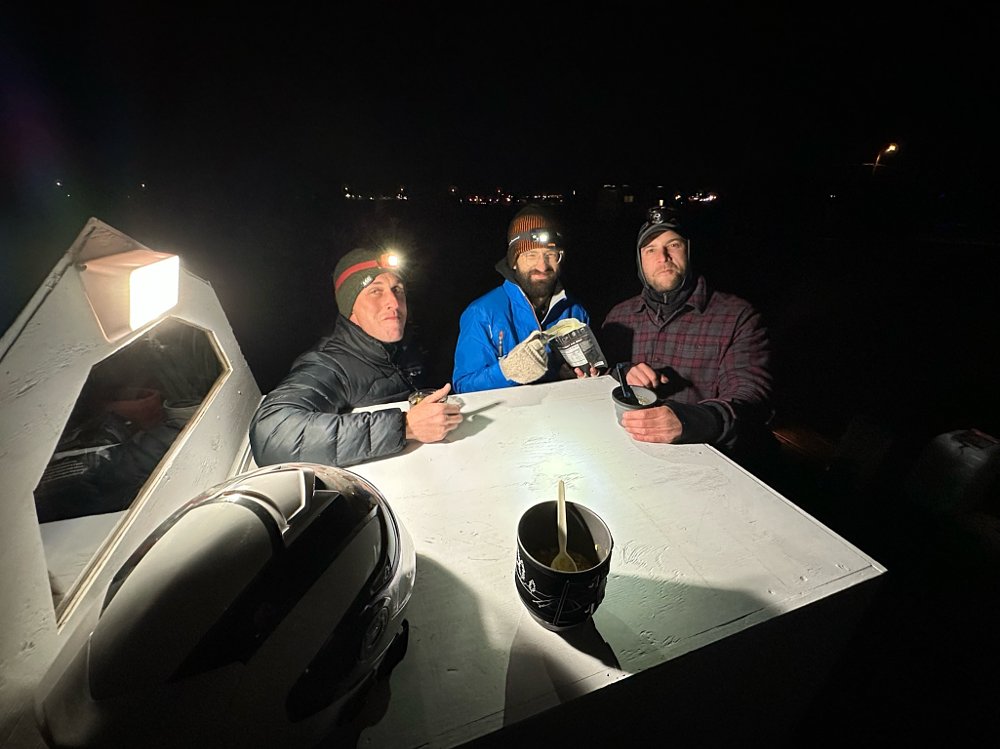
Not so much fun was stopping. With all that weight pushing forward and not down on Dave’s contact patches it was shockingly easy to lock both the front and rear brakes. Luckily I avoided any panic-braking situations over the course of the trip. Ari had the opposite sensation on the Wing-ebago — the front brake on the ‘Wing was a little shaky but the rear was OK and with an extra few hundred pounds on the back the rear wheel had no shortage of grip.
Ultimately, what we learned won’t come as a huge surprise. The Wing-ebago, while brilliant, made for a motorcycling experience that was both underwhelming and overwhelming. It’s horrendously cumbersome at low speeds and yet it gets blown around like a napkin on the highway. During his build research, Ari learned about poor-man’s fiberglass (cloth pulled tight over foam, and then slathered in wood glue). He seems convinced that a similar design made out of PMF, with a little less surface area and fewer pounds, would be the ticket.
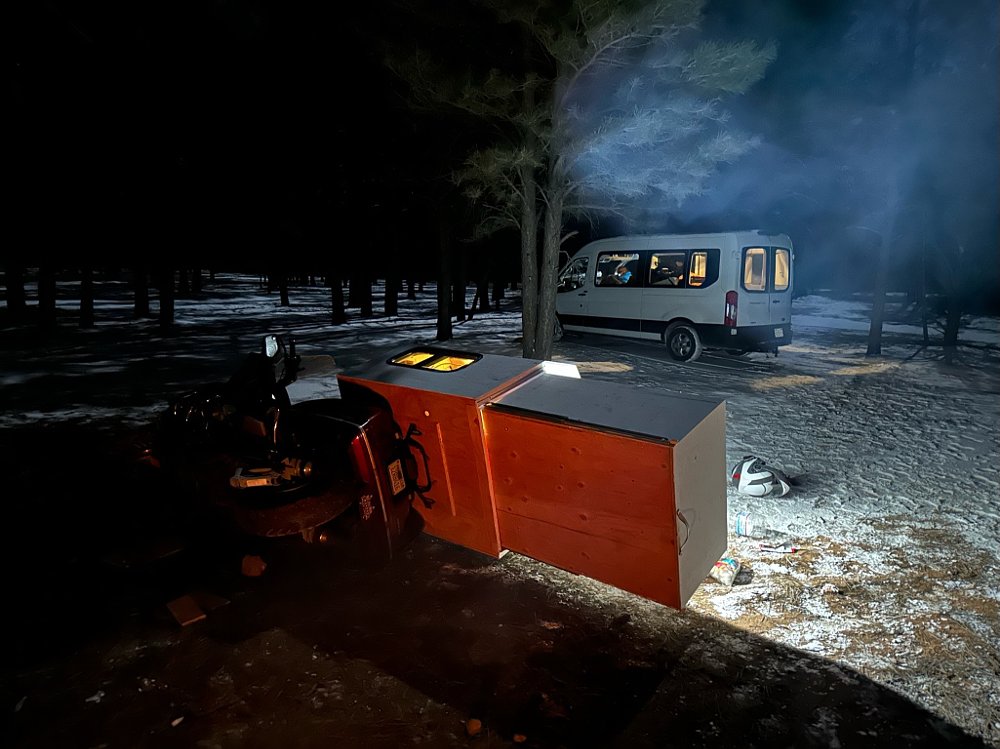
Towing a camp trailer behind a motorcycle, on the other hand, is a pretty good solution to making moto-camping more comfortable. If it hadn’t been cold enough to freeze molasses when we were in the backcountry, I would have been happy in the Kwik Kamp. And I never even took advantage of the best part, which would be to unhook the sport bike from the trailer, go ride twisty roads all afternoon, and then return to the canvas palace. So much potential.
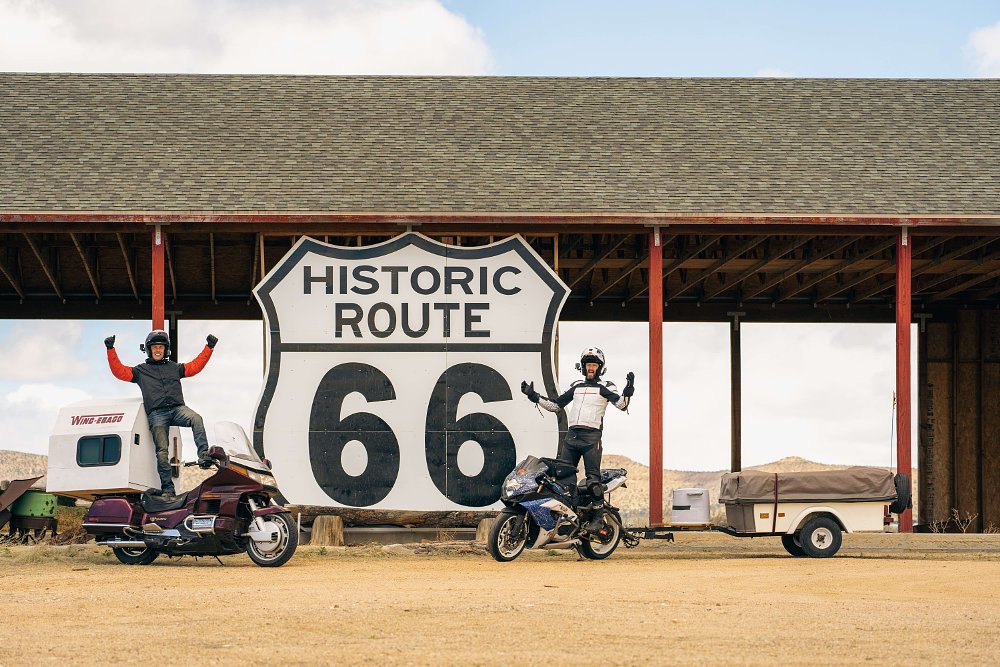
That said, considering all of the compromises we made in the motorcycling experience, a tent that weighs a couple of pounds and drops easily into a backpack or saddlebag suddenly doesn’t sound so bad. As long as you’re comfortable sleeping on the ground, like an animal. Which, if you build your own motorcycle motorhome, you might end up doing anyway.





